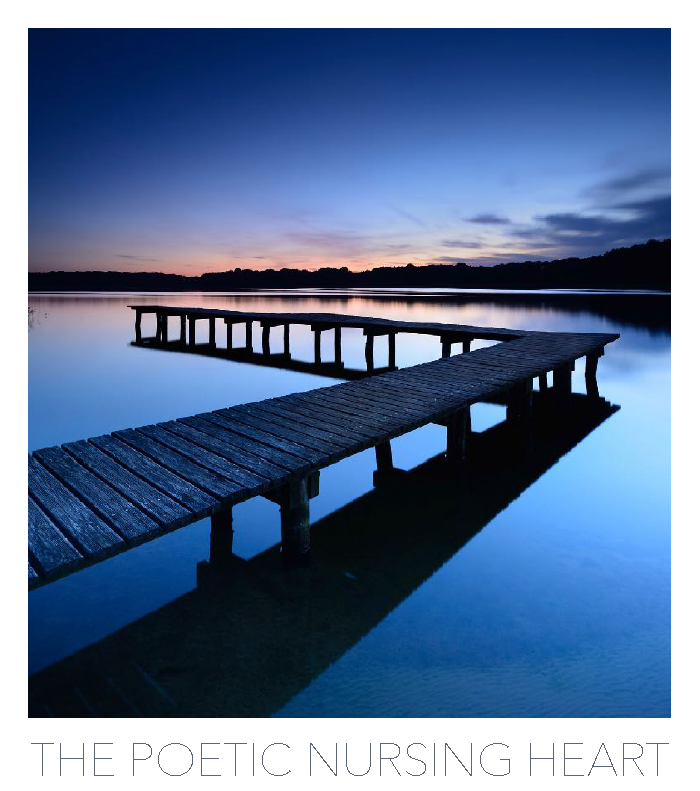Dawn an educator in America was particularly struck by the ‘student’s voice – blog’ which was an insight into Cathi Leah’s Inpression of value of prose in care. Linking to a shared nursing theorist Jean Watson. Dawn’s response was wonderful – ‘finally! I can feel excitement for nursing theory. It is so abstract and sometimes does not connect in the early semesters to development of skills, but is so important in development of structure and attitude to care’ Bellow is a blog that centers around connections and creativity.
I have not tried to blog, but I will try here to explore some of the connections made with faculty at Nevada State College and during an International mission I made to Nepal in 2017 with faculty at a University in Pokhara, Nepal.
I particularly related to the outside the lines piece within the #poeticnursingheart – and will hopefully add something to this as it pertains to faculty meetings.
Building a curriculum inclusive of healing arts is no easy task. As a faculty member, we were provided guidelines and regulations all of which had to be met, before we could possibly think outside of the box to include arts. The heart of any nursing curriculum, is its faculty. As the center of the building blocks, we needed to embrace arts ourselves, so for one year we had “unmeetings” at the end of each month.
So what are “Unmeetings” you might ask? Well, we preferred using gatherings of like-minded individuals who used their senses to embrace new learning.
We had unmeetings where we shared recipes and home-made foods with dialogue and reflection on how these experiences made us feel.
We used touch at other meetings to use labyrinths for mindful meditation and activities we could use with students before exams. University of Colorado Children’s Hospital has taken this to another level. For example, they procured funds and developed a walking labyrinth from bricks – rather like the yellow brick road, but inside a small garden to provide staff and families alike, with an opportunity to walk and reflect.
A popular activity here in Las Vegas where I reside, is painting with adult beverages. As a faculty, we attended one of these events (without the adult beverages) and had a lesson to paint a heart – it was by popular vote from a selection provided. The faculty who felt most freedom adapted colors and blurred lines, while those least comfortable stuck more rigidly to the designers colors and instructions. The faculty evolved once they saw some adaptations and more faculty made changes in the final touches. Seeing was an important sense to overcome here in art and healing.
The final two meetings related to hearing and smelling – we had a lesson on the use of aromatic oils and another one for use of music to calm student anxiety during exams. One of the faculty took the idea of the oils and made small cotton pouches containing rice and made them available for final exam week – a few drops of lavender oil was provided to those who chose to use them and they were able to keep them on their desk for the exam or to calm nerves in their hands as they worked through problem questions. Making use of the senses helped to improve the creativity of the faculty to the benefit of the students.
Finally, I would like to reflect how this influenced me during a 2017 visit to A&B International Hospital in Pokahara, Nepal. I was been invited by Dr. Rabi & Mrs. Anjali Dhakal to present to local nurses on current issues facing nurses in America. After enlightening me through a student presentation on issues facing nurses in Nepal, the students and nurses in the local community were interested to hear that many of the same issues faced nurses in America including staff levels to keep patient’s safe and working conditions. The lack of regulations and deference to physicians is in complete contrast to the stark autonomy, critical thinking and clear scopes of practice expected in developed countries.
The contrast same could be true of the colorful sari’s worn by the students nurses as a uniform while in lecture, and the bland colors of the scrubs seen in American nurses. The nurses ability to use their senses to heal and create a colorful environment in Nepal permits healing environments to be developed in conjunction with families. By comparison, the hospital environments in America are technology driven and leave little room for personalization or creativity – this is slowly changing though as nurses cry out for more compassion and time to provide bedside care. Mrs. Anjali Dhakal is a registered nurse who completed her undergraduate work in India and her Master’s degree in Wu Han, China. She has also passed the NCLEX exam to obtain a license as an RN in America and can relate on the differences in culture at the bedside. Impressing upon these young nurses the need to retain their roots in caring at the bedside is difficult where little structure is seen and the desire to “have a better quality of life” in a developed country is drawing away many nurses from Nepal. Poetry is less of a reflective piece in a country that is 80% Hindu and 20% Buddhist, but the deeply spiritual practices of using incense (smell), traditional foods and herbs (taste), seeing amulets and offerings (vision), and sound (including singing/healing bowls and chanting) is instrumental to the nurse’s practice and family engagement. It was such a rich exchange of culture and for some, eye-opening to realize monetary exchange would potentially compromise quality of life with length of shifts, amount of money needed monthly to maintain shelter, food, home life etc.
In gratitude for the opportunity to share, Dawn
Dawn Koonkongsatian MSN Ed, RN, CNN, COI
Nevada State College Lecturer
School of Nursing
 The Poetic Nursing Heart
The Poetic Nursing Heart Claire Haines
Claire Haines 335
335


